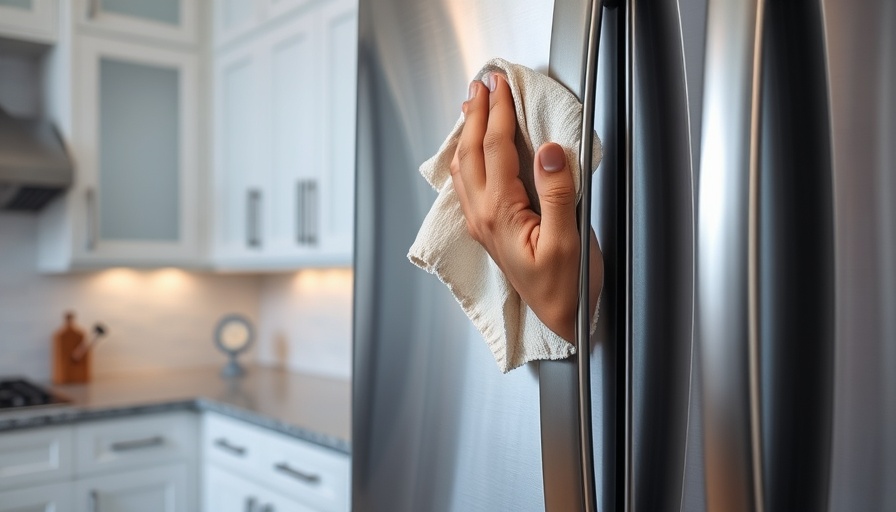
How to Make Your Stainless Steel Shine Like New
Stainless steel appliances can add a touch of sophistication to any kitchen, but maintaining their shine is no simple task. Before diving into how to clean stainless steel appliances effectively, it’s crucial to understand why they require specific care. Stainless steel is a popular choice for kitchen appliances due to its durability and aesthetic appeal, yet it's prone to fingerprints, smudges, and streaks that can detract from its beauty.
The Science Behind Stainless Steel Care
Understanding stainless steel starts with recognizing its composition. Made of iron with a blend of chromium, nickel, and other metals, its shiny appearance is a result of a smooth surface that reflects light. However, this same smoothness means that any dirt or oil can quickly cause visible blemishes. For a gleaming kitchen, the right cleaning methods are essential.
Essential Cleaning Supplies
Never underestimate the power of proper cleaning supplies. For starters, ensure you have a gentle dish soap, microfiber cloths, vinegar, and olive oil on hand. These staples can be your best friends when it comes to maintaining the pristine look of your appliances. Microfiber cloths, in particular, are excellent for trapping dirt and oils without scratching the surface.
Step-by-Step Cleaning Process
Now that you're armed with the right tools, let’s break down the cleaning process into simple steps. Follow this method, and you’ll have your stainless steel gleaming in no time:
- Gather Your Supplies: As mentioned, a gentle dish soap, vinegar, microfiber cloths, and olive oil are the staples of your cleaning arsenal.
- Prepare a Soapy Solution: Mix a few drops of dish soap into warm water. This gentle solution will help lift dirt without damaging the finish.
- Wipe Down Surfaces: Using a microfiber cloth, wipe down the surface in the direction of the grain. This is crucial to avoid any streaking, as wiping against the grain can lead to a less-than-stellar finish.
- Rinse and Dry: Rinse the cloth in clean water and go over the surfaces again to remove any soap residue. Then, dry it thoroughly to prevent water spots.
- Final Touch with Vinegar: For an added shine, spray a solution of equal parts vinegar and water on the appliance, wipe it down, and buff with a clean, dry cloth. This will enhance the shine and offer a streak-free finish.
- Seal with Olive Oil: As a final step, apply a few drops of olive oil on a clean cloth and wipe the surface down. Not only does this produce a beautiful shine, but it also creates a protective layer against future smudges.
Frequency of Cleaning
How often should you perform this cleaning ritual? For most households, a weekly wipe-down will suffice to keep your appliances looking pristine. For homes with heavy cooking or children, a bi-weekly cleaning might be more appropriate. The key is to establish a routine that fits your lifestyle to prevent grime buildup.
Common Misconceptions
It’s essential to dispel some common myths about cleaning stainless steel. Many people believe that steel wool pads work wonders—wrong! These abrasive materials can scratch your surfaces permanently. Similarly, products with bleach or ammonia can cause discoloration and damage the protective layer, leading to corrosion and other issues. Stick to the safe methods outlined here for long-lasting results.
Conclusion: Your Gleaming Kitchen Awaits!
Cleaning your stainless steel appliances doesn't have to be a daunting task. With the right tools and techniques, you can enjoy a kitchen that shines every day. So, roll up those sleeves, gather your supplies, and give your stainless steel the shining love it deserves!
 Add Row
Add Row  Add
Add 



Write A Comment